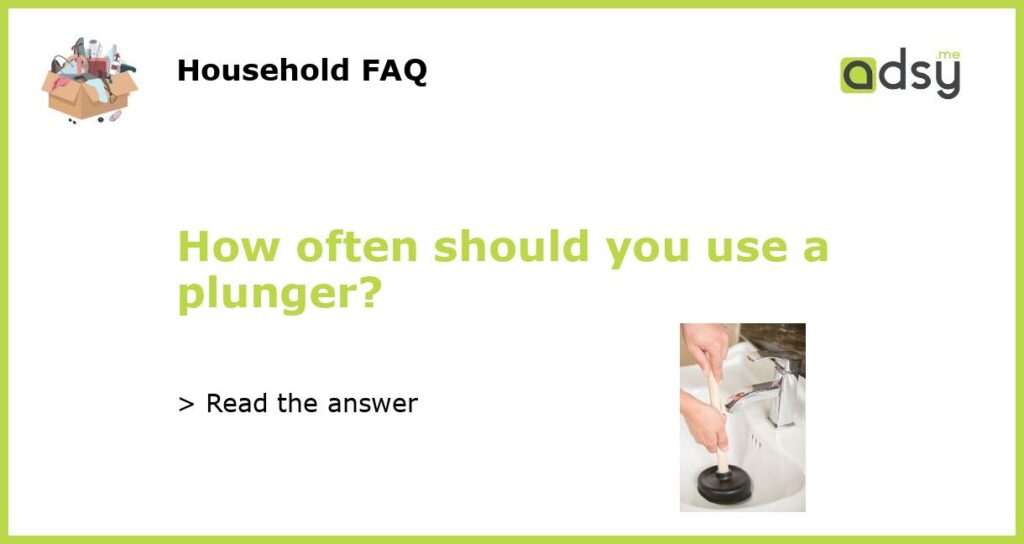Why use a plunger?
A plunger is a simple yet effective tool used to clear clogs in drains, toilets, and sinks. It consists of a rubber cup attached to a shaft or handle, which creates a vacuum when pressed against a surface. This vacuum action helps dislodge and push through the blockage, allowing for free-flowing water and proper drainage. While plungers are commonly associated with toilet use, they can also be used in other areas of your home where clogs may occur.
When to use a plunger?
If you have a clogged drain, sink, or toilet, a plunger can be the first line of defense. It is typically used when the clog is caused by organic matter or debris that can be dislodged and pushed through the pipes. Common causes of clogs include hair, food particles, grease, or toilet paper buildup.
How often should you use a plunger?
The frequency with which you need to use a plunger depends on a variety of factors, including the age and condition of your plumbing system, your usage habits, and the types of materials that typically flow through your drains. In general, if you find yourself needing to use a plunger frequently, it may be a sign of an underlying issue that should be addressed.
If you are experiencing frequent clogs, it is a good idea to have a professional plumber inspect your plumbing system. They can identify any potential issues, such as pipe damage or tree root intrusion, that may be causing the recurring clogs. By addressing these issues, you can prevent future clogs and reduce your reliance on a plunger.
Tips for using a plunger effectively
To get the most out of your plunger, follow these tips:
- Choose the right plunger: There are different types of plungers available, including cup plungers for sinks and flat-bottomed flange plungers for toilets. Make sure you have the correct type for the job.
- Create a tight seal: Before plunging, ensure that the plunger forms a tight seal around the drain or toilet opening. This will help create a stronger vacuum.
- Use the right technique: For sinks and drains, plunge in an up-and-down motion, creating suction to dislodge the clog. For toilets, place the plunger in the bowl and push down firmly, then pull up quickly to create suction.
- Be patient: It may take a few attempts to fully clear a clog. Keep plunging until the water starts to drain freely.
- Maintain your plumbing: Regularly clean your drains and avoid flushing or rinsing non-flushable items down the toilet or sink. This will help prevent clogs from occurring in the first place.
When to call a professional
While a plunger can handle many common clogs, there are times when it is best to call a professional plumber. If you have tried using a plunger without success or if you are dealing with a persistent or recurring clog, it may be an indication of a more serious plumbing issue.
A professional plumber will have the tools and expertise to diagnose and fix the problem, ensuring that your plumbing system is working effectively and efficiently. They can also provide recommendations for preventive maintenance to avoid future clogs and potential damage to your pipes.
By using a plunger as part of your regular maintenance routine and knowing when to call in a professional, you can effectively address clogs and keep your plumbing system in optimal condition.






